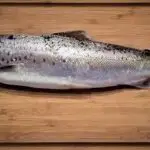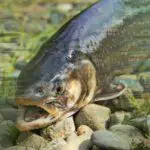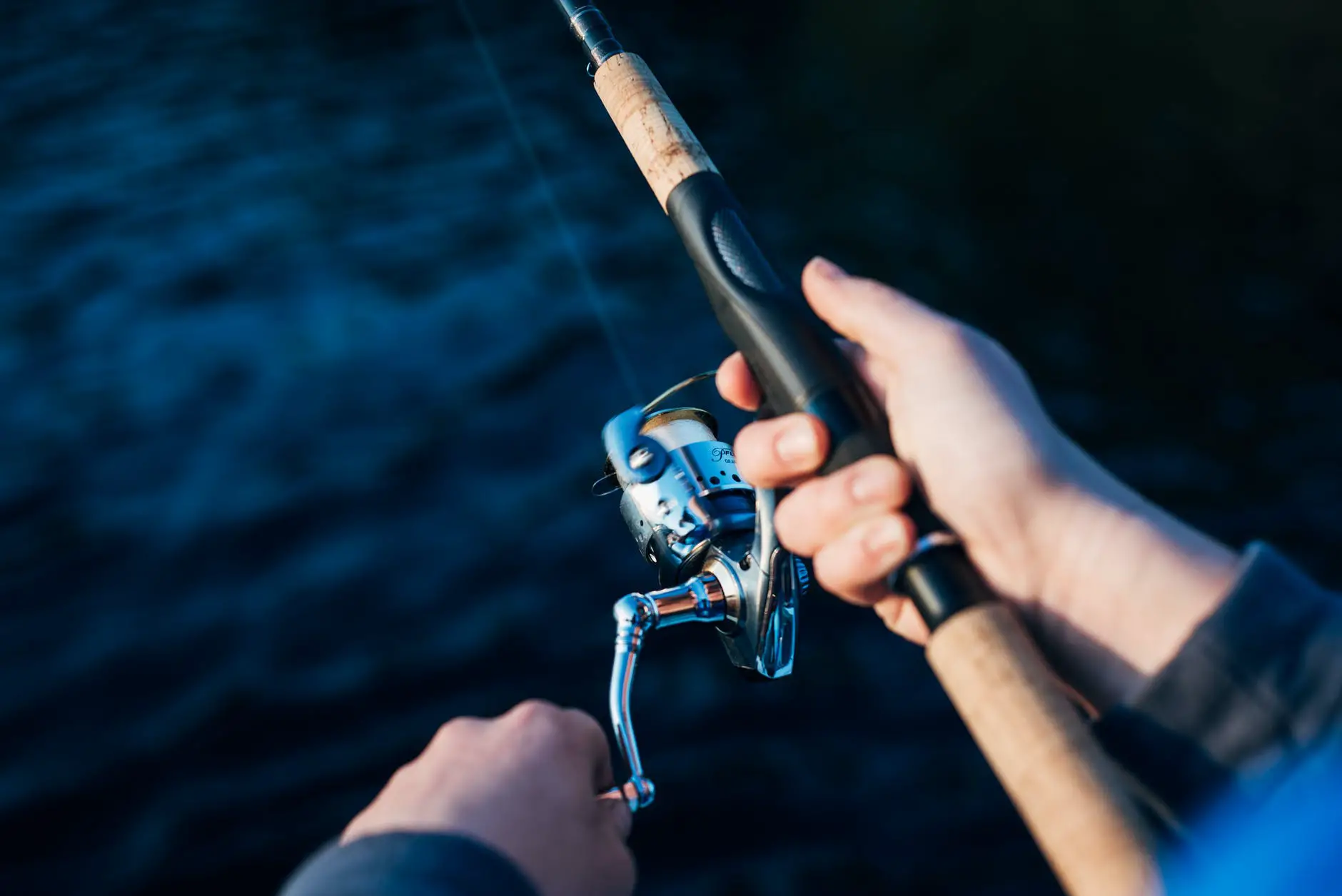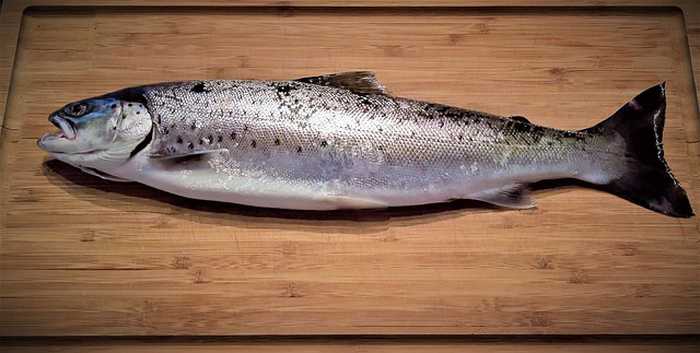Yes, crappie can see colors. Just like people, they have both rods and cones in their eyes, so they are able to see contrasting whites and blacks in low light, but also recognize color when enough light is available.

1. What colors can crappie see?
Crappie are able to see a range of colors, but they are most sensitive to light in the blue and green wavelengths. This means that they can see whites and blacks well in low light conditions, but may have difficulty distinguishing between different colors when there is more light available.
2. How well can crappie see colors?
Crappie, like people, have both rods and cones in their eyes. This means that they can see contrasting whites and blacks in low light, but also recognize color when enough light is available.
So, how well can crappie see colors? It depends on the amount of light that is available. In low light conditions, crappie will be able to see shades of gray and white. However, if there is enough light available, crappie will be able to see colors.
3. Do different color lures work better for crappie at different times of the day or under different water conditions?
It’s a common question among crappie fishermen: do different color lures work better at different times of the day or under different water conditions? The answer, unfortunately, is not a simple one. It depends on a variety of factors, including the time of year, the weather conditions, and even the mood of the fish.
In general, though, certain colors are more effective than others at certain times of day. For example, bright colors like chartreuse and orange are often more effective in low-light conditions like early morning or evening. Darker colors like black and blue are typically more successful in high-light conditions like midday. Of course, there are always exceptions to this rule – sometimes fish just don’t seem to be interested in anything but their favorite color! – so it’s important to experiment with different options until you find what works best for you.
Water clarity can also play a role in choosing the right lure color. In clear water, brighter colors will be more visible to fish and thus more likely to attract their attention. In murky water, on the other hand, darker colors may be less visible but can still be enticing to curious fish who are attracted by movement or sound. Again, it’s important to experiment until you find what works best in your particular situation.
Finally, keep in mind that fish behavior changes throughout the year as they adjust to changing environmental conditions. As a result, what works well at one time of year may not be as successful later on.
4. How does the color of a lure affect how well it is seen by a crappie?
The color of a lure can have a significant impact on how well it is seen by a crappie. Opaque lures tend to hold color in more stained water and are more visible at greater depths. Red fades fairly quickly as depth increases, while purples and blacks are among the last to disappear at depth. Chartreuse and white, if opaque, offer good visibility in lightly stained to very dingy water.
In general, brighter colors are going to be more visible than darker colors. This is because light penetrates water better than dark colors. So, if you’re fishing in clear water, you want to use bright lures so the fish can see them clearly. In stained or murky water, on the other hand, darker lures will be more visible because they won’t be washed out by the murky water.
One final factor to consider is that fish see different colors than we do. They can see some ultraviolet light that we cannot see, so certain UV-reflective lures can actually be quite visible to fish even in murky waters.
5. Is there a difference in the way males and females see colors?
Yes, there is a difference in the way males and females see colors. Females are better at discriminating among colors, while males excel at tracking fast-moving objects and discerning detail from a distance. These differences are likely due to evolutionary adaptations that are linked to our hunter-gatherer past.
Females have better color vision because they need to be able to distinguish between different shades of colors in order to find ripe fruits and vegetables. This ability also comes in handy when choosing mates or nesting materials. On the other hand, males need to be able to track fast-moving objects (such as prey) and see details from a distance in order to be successful hunters.
These differences in visual acuity can be traced back to our hunter-gatherer ancestors. In prehistoric times, females were responsible for gathering food while males went out hunting. This division of labor meant that each sex needed different skills in order to be successful at their respective tasks. Over time, these abilities became more refined and now we see them manifested as differences in how males and females see colors.
6. Does the size of a crappie affect its ability to see colors?
There is no definitive answer to this question since there is no known scientific research on the matter. However, based on what we do know about fish vision, it is likely that the size of a crappie does affect its ability to see colors.
Fish have good color vision, but they are not able to see all colors equally well. In general, fish can see blues and greens best, followed by yellows and oranges. Red is usually the hardest color for fish to see. This is because water absorbs red light more than any other color of light, so red objects tend to look darker and less distinct underwater.
Since blue and green light are absorbed less than red light in water, larger crappies are probably able to see these colors better than smaller ones. This is because bigger fish have eyes that are further away from the water’s surface, allowing more blue and green light to reach their retinae. Smaller crappies, on the other hand, have eyes that are closer to the water’s surface where red light is more prevalent. As a result, they may not be able to see blues and greens as well as their larger counterparts.
7. At what depth do crappie lose their ability to see color?
Crappie are a species of freshwater fish that are popular among anglers. They are known for their delicate flesh and tasty flavor. Crappie are typically found in slow-moving waters, such as lakes and ponds.
While crappie do have excellent vision, they do lose the ability to see color at depths below 20 feet or so. This is due to the way light travels through water. Underwater, blue light waves travel farther than other colors of light. As a result, everything appears blue at depth. Crappie (and other fish) use this lack of color to their advantage when hunting for food. Because their prey is also blue-tinted, it can be difficult for predators to spot them.
8. Are there any other factors that can affect a crappie’s ability to see color?
There are a few other factors that can affect a crappie’s ability to see color. One is the time of day. Crappies tend to be more active in low light conditions, so their eyes are better adapted to seeing in those conditions. However, this also means that they don’t see colors as well in bright light. Another factor is water clarity. In murky water, crappies may not be able to see colors as well as they can in clear water. Finally, age can also play a role. Younger crappies tend to have better vision than older ones.
9. What is the best time of day to fish for Crappies using colored lures?
The best time of day to fish for Crappies using colored lures is early in the morning or late in the evening. This is when the crappies are most active and will be more likely to bite on your lure. The water temperature also plays a factor, so if it is warmer out, fishing early or late in the day will still be your best bet.
10. What are some popular Crappie fishing lures and their corresponding colors?
There are a few different types of lures that are popular for Crappie fishing, and they come in a variety of colors. Some common lures include jigs, minnows, and spinners. The color of the lure you use can be important, as certain colors may be more effective than others depending on the time of year and the conditions of the water. For example, during the spring spawning season, brighter colors like chartreuse or white may be more visible to fish and trigger them to bite. In stained or murky water, darker colors like black or purple can be easier for fish to see. Ultimately, it is important to experiment with different colors to see what works best in any given situation.





